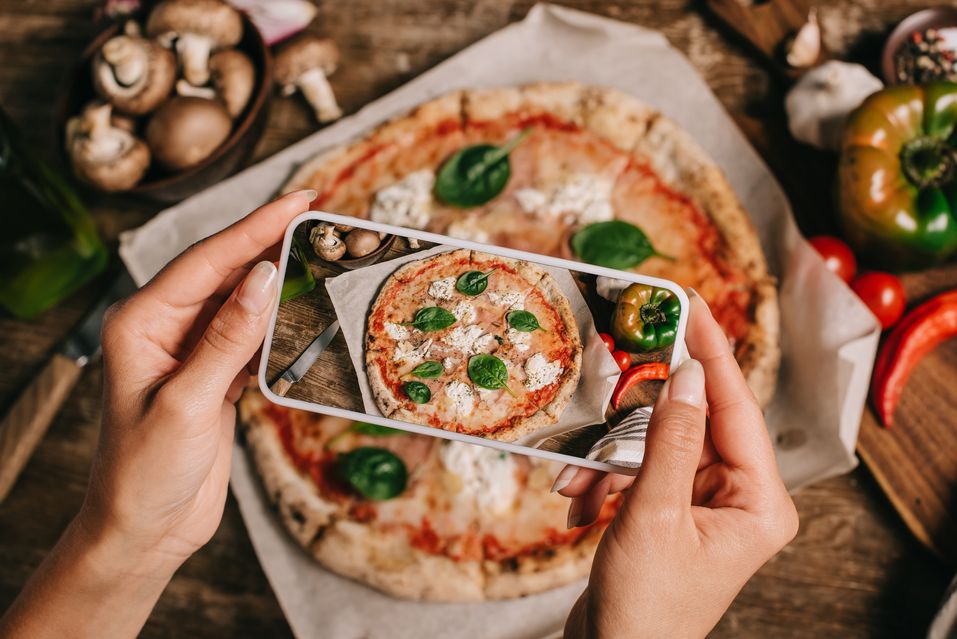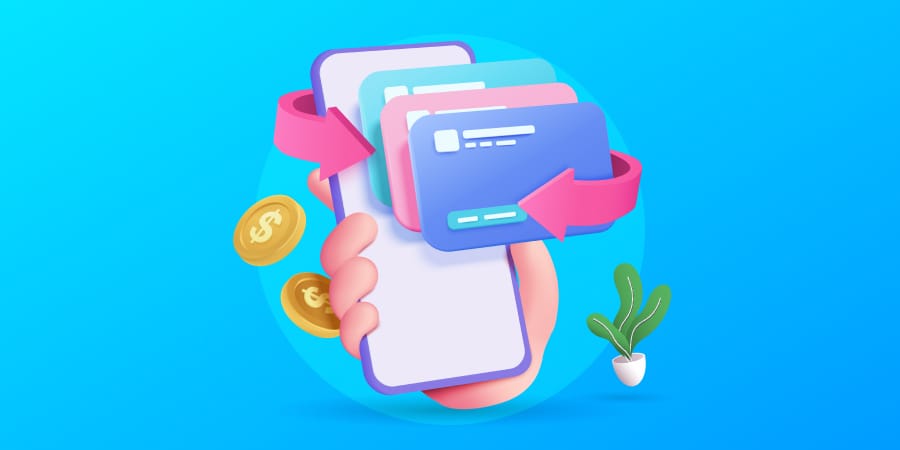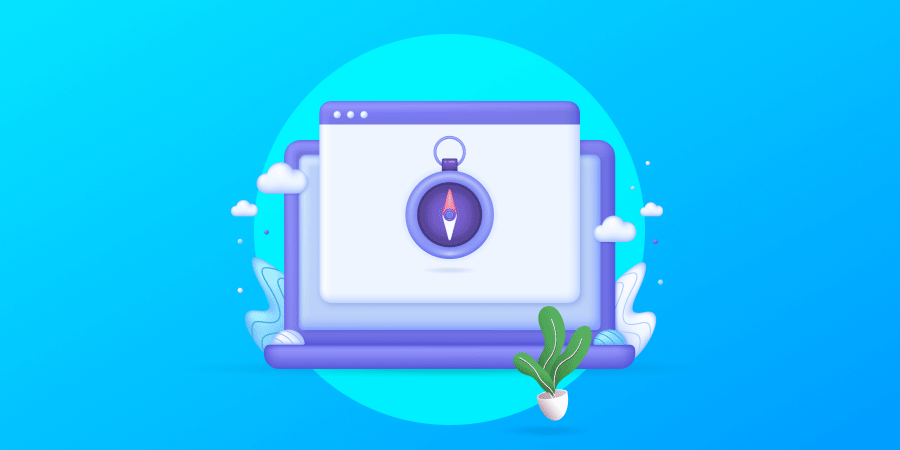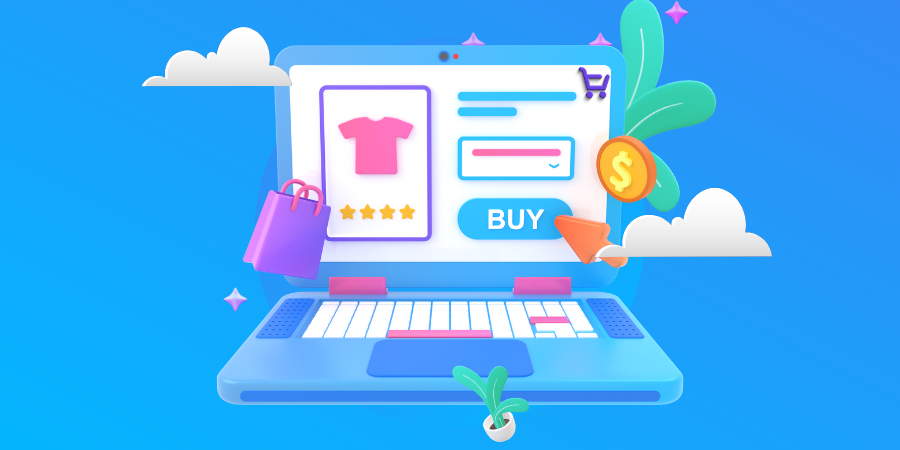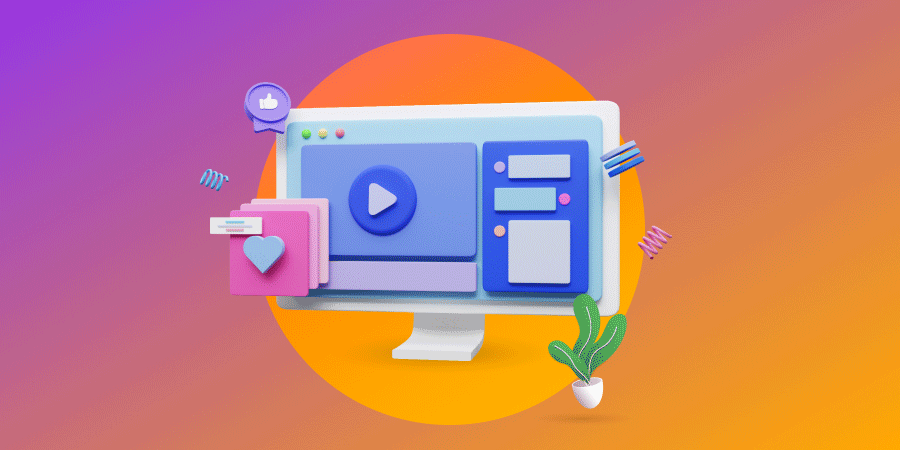The food retail market is expected to surpass 3.3 trillion dollars by 2026.
This market’s growth rate and volume of consumption will make it more competitive than ever.
If you run a food and beverage company, you’ll need to tap into some highly efficient ways of reaching out to prospects and converting them.
In this article, our digital marketing experts will share some of the most effective digital trends to leverage in food and beverage marketing.
Work with our digital marketing experts. Request a quote
What Is Food & Beverage Marketing?
Food and beverage marketing is the action of promoting and selling edible products and drinks to consumers.
The ultimate goal of food and beverage marketing is to drive sales, build brand loyalty and maintain a competitive edge in the culinary industry. This is achieved through a mix of marketing techniques, such as packaging design, advertising campaigns, social media marketing and product endorsements.
Why Is Food & Beverage Marketing So Important?
Food and beverage marketing is vital for your brand as it acts as the bridge that connects your products, values and mission to your consumers.
An effective food and beverage marketing strategy will highlight why your products and services are a unique choice and why they deserve to be chosen above of your competitors’.
This is particularly important in an industry that provides necessary goods to its consumers, in turn producing constant demand and ever-growing competition.
Just how big is the industry?
The U.S. sees $83.1 billion in food and beverage store sales every month.
Top-Performing Food & Beverage Marketing Channels
Food and beverage marketing can not only grow your online sales but is likely to increase your store’s foot traffic or brand’s visibility on shelves as well.
Some of the most effective marketing channels for food and beverage brands are:
- Social Media
- Blogging
- YouTube Vlogging And Tutorials
- Reputation Management
- Google My Business
- Customer Advocacy
- Company Website
- SEO Content
- Email Marketing
- Augmented Reality
- Paid Campaigns
- Virtual Events
Let’s break them down.
12 Food & Beverage Marketing Strategies To Grow Customer Base
Of the many ways to attract new customers, the following 12 strategies will prove to be the most efficient this year – and we have the research to prove it.
1. Social Media Loves Food & Beverage Brands. Leverage Their Enthusiasm.
Social media is one of the most lucrative channels for the food and beverage sector, because:
- Food and drink businesses receive above average engagement rates on social media platforms like TikTok.
- Brand posts on social media are meal inspiration sources for 19% of users.
- Potential reach is vast, with global brands like Coca-Cola having 108 million followers on Facebook alone.
Instagram, Twitter and Facebook users love food & beverage brands, making these some of the most effective channels to leverage in your digital strategy, in terms of cost and results.
Speaking of F&B digital strategies, check out our guide to building your food and business brand for customer loyalty and repeat sales.
So how can your brand incorporate social media into your food and beverage marketing strategy?
- Place your product in popular contexts: From reinventing popular recipes to emphasizing the health and environmental benefits of your production process, create posts and campaigns that incorporate your products into relevant discussions among your target audiences.
- Encourage user-generated content: Encourage your followers to share their experiences with your food & beverage products via photos, video reviews and more. This encourages a constant stream of content from customers, builds lasting relationships with your brand and engages potential new consumers.
- Use the evolving social ads: Use sophisticated targeting algorithms and innovative formats to optimize spending and attract highly qualified leads into your sales funnel.
- Form partnerships: Create strategic partnerships with brands and influencers. Collaborative social media campaigns can educate your audience on the versatility of your products, as well as grow your follower base.
If you’re looking to brush up your knowledge on social media marketing terms, we have an in-depth guide to social media terms you should know.
2. Food Blogs Are The Most Visited Blogs Online. Direct This Traffic To Your Website.
According to one study, food bloggers achieve the highest number of visits and income of any niche blogging categories.
Their educational and/or entertaining content provides great opportunity for food and beverage businesses to increase brand awareness and retention, as well as benefit from new customers and visitors.
- Food bloggers receive the highest monthly average income of all major blogging niches.
- Food blogs make 44% of their income from ads.
- Food blogs account for 42.8% of all niche blog topics with over 50,000 monthly sessions.
For example, let’s take a look at a food and beverage blog that focuses on educating users about how to eliminate food waste.
Did you know that you can make marinade from pickle juice? Imperfect Foods creates inspiring blogs to show how you can use fruits, vegetables and other foods you might toss, to create something new.
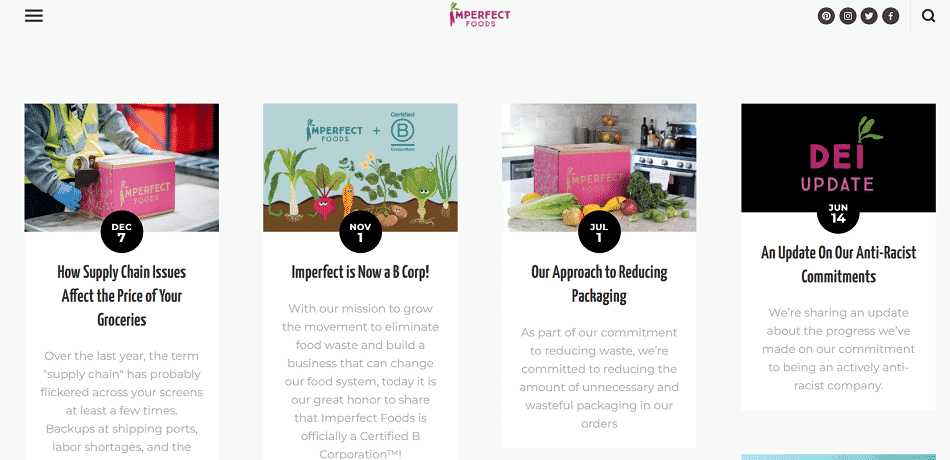
Another inspiring example is food and beverage blog, Siete Foods.
From traditional Mexican cuisine recipes to posts about how food can either heal or harm your body, Siete Foods creates content that engages and educates, paired with high-quality, vivid photography.
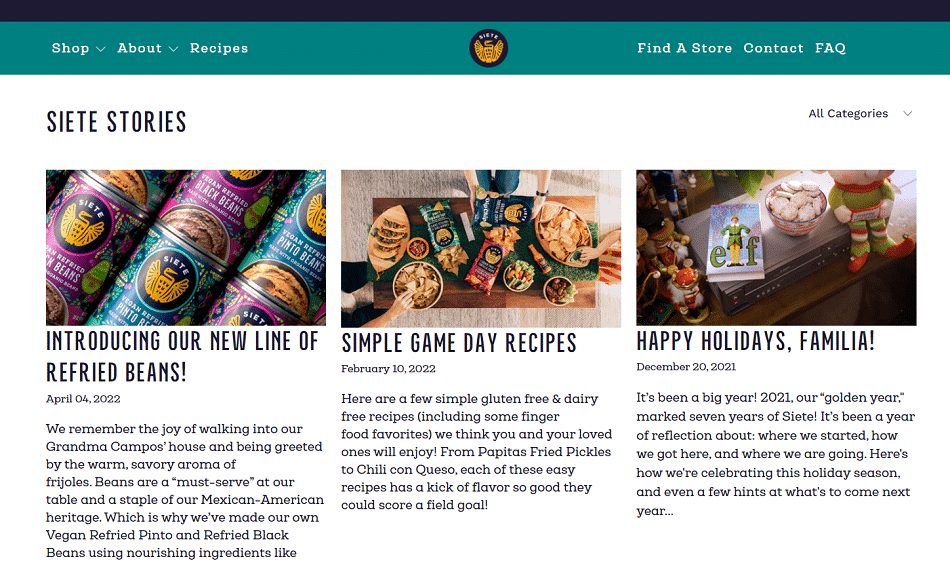
Partner with food bloggers to:
- Introduce your product to new audiences and gain a larger following
- Educate audiences on the use and versatility of your products
- Increase trust in the quality of your product
Extra tip: The last few years saw the growth of the organic, vegan and sustainable food and beverage trends. Brands that uphold these values are well-positioned to benefit from the increase in environmental and health awareness.
To make the most out of it, create content around:
- Organic / vegan / allergen-free products
- Environmental and social benefits of your production process
- Environmentally and socially responsible values and motives
3. Short Form Videos Are The Immediate Future. Serve Your Products As Quickfire Reels Or YouTube Shorts.
YouTube enjoys a great following among food and beverage customers. Whether they are seeking culinary tutorials or reaction-video entertainment, this audience is highly engaged – an ideal opportunity to gain more eyes and dollars for your brand.
Still unsure about creating valuable in-depth, extended tutorials and explanatory videos? Check out these stats about YouTube Shorts:
- 59% of Gen Z agree that they use short-form video apps to discover things before watching longer versions.
- Adding a vertical creative asset to a Video action campaign increases conversions by 10-20% on YouTube Shorts when compared to landscape assets alone.
- Consumers consider short-form video content to be 2.5x more engaging than long-form.
The appeal of YouTube Shorts is summarized by The Korean Vegan, a U.S.-based cooking creator:
“The first one to two seconds are the most important. That hook better be visually, audibly, and intellectually irresistible.”
The Korean Vegan
When taking a wider view, video can help your food and beverage marketing efforts:
- Introduce your product to new audiences and gain a larger following
- Educate the audiences on the use of your products, production process and/or brand values
- Reinforce your brand identity through behind-the-scenes, endorsements and/or storytelling
4. 98% Of Customers Read Reviews. Consider Reputation Management As One Of The Pillars Of Your Digital Strategy.
Your food and beverage marketing strategies should encourage customers to leave reviews, which you should monitor closely for higher customer satisfaction. Why? A Local Consumer Review Survey found that:
- 98% of people read reviews for local businesses.
- Only 4% of customers never leave a review.
- 88% of consumers are likely to use a business if they see the business owner responding to reviews.
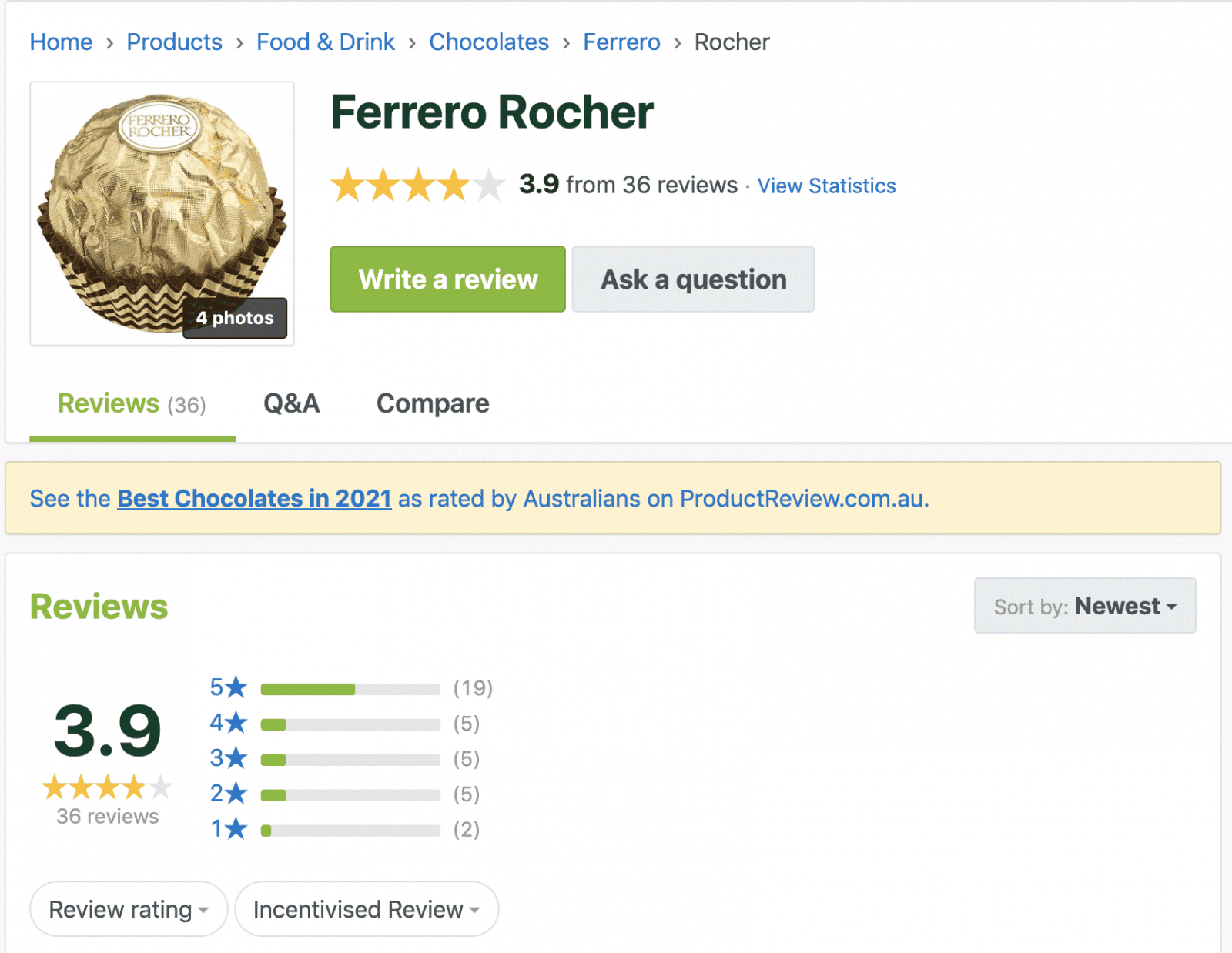
Some general tips on how to set up a profitable online review system for your business include:
- Use poor reviews to your advantage: Getting a negative review of a product can be reversed by responding directly to the reviewer by asking questions, validating their feelings and focusing on solving the problem. Disappointed customers could, through good customer service, reverse their opinion and update their review.
- Improve your customer experience by addressing customer feedback: While responding to customer reviews is one step in making your customer experience better, you should also use this feedback to improve your processes. For example, let’s say you’ve gotten a lot of reviews about the dim lighting in your dining area or there is a consistent flow of people saying that the pasta in your spaghetti bolognese isn’t al dente enough. What would you do to improve these concerns? Solution: Improve the lighting in your dining area and update your cooking specifications for your pasta.
- Encourage positive reviews on targeted platforms or owned channels: Encourage your users to review your products or share their experience with your customer service in exchange for perks. This will help grow your brand awareness and trust.
- Monitor the right platforms: Users are sharing their experiences on social media pages, Yelp, Tripadvisor and similar platforms. Identify and monitor these platforms as part of your brand reputation management strategy.
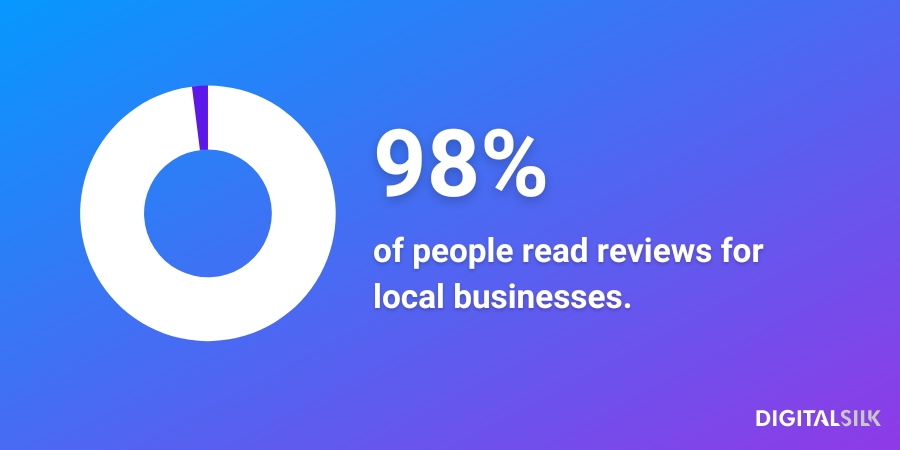
5. 64% Of Consumers Use Google My Business To Find Business Info. Optimize Your Profile To Drive More Traffic To Your Physical And Online Stores.
Google My Business (GMB) is an overlooked business directory that is ideal for companies in this niche and one of the hottest digital trends in the food and beverage industry.
According to a Google My Business Insights Study:
- 64% of consumers have used Google My Business to find the address or phone number of a local business.
- Each month, an average business gets 59 actions from Google My Business listing.
Registering your food and beverage business, be it a wine and cheese shop, artisanal ice cream stand or brand headquarters, establishes credibility and allows you to attract the near-me searchers and organic online store traffic.
Google My Business:
- Improves business visibility through local SEO
- Lets you connect with new audiences
- Helps you understand your customers’ behavior
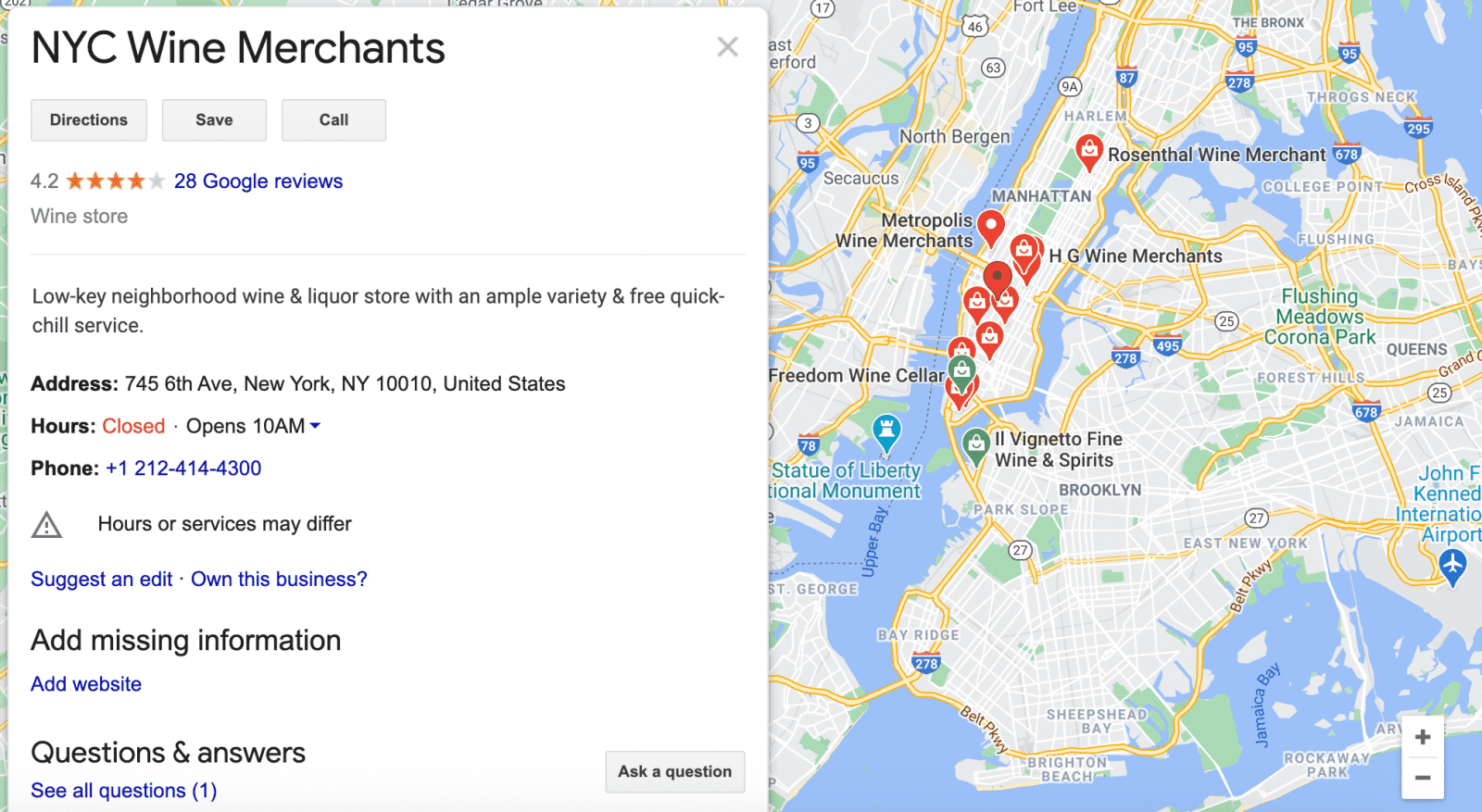
When a prospective customer searches for your business on Google, the GMB page will show your working hours, website, location and photos at the top of the search results.
These points help educate users about your business and help them find, contact, visit and visualize it.
Some of the best practices for optimizing your GMB page this year include:
- High-quality photography: A study found there is a strong connection between the number of photos on GMB and the search performance; Businesses with more photos get more search and Maps views, and they appear in more direct and discovery searches.
- Use of GMB’s features: Go beyond the basic profile setup and focus on the additional features such as Review Management, Insights, Bookings, Posts and Q&A. Creating an Offer Post (an Update, Event, Offer or Product) can engage audiences to share your news, offers and products.
- Advanced information: This may include a store code, labels, Google ads location and more, which can help new customers find your business more easily.
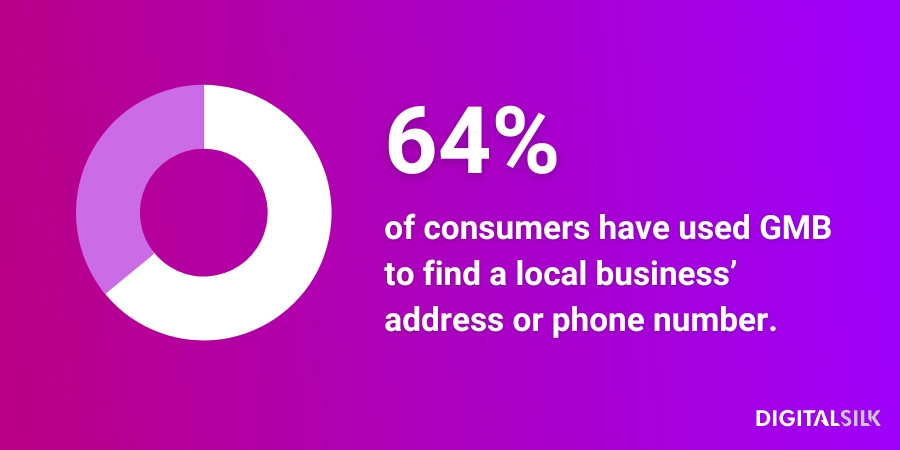
6. 88% Of Consumers Trust Peer Recommendations. Encourage Customer Advocacy To Increase Sales & Retention.
Word-of-mouth has been one of the most powerful marketing channels since the infancy of trade and its power translates to the digital environment unscathed.
- An overwhelming 88% of people trust recommendations from people they know.
- Prospects who come via referrals are 37% more likely to become returning customers than those who enter the sales funnel via other channels.
- A recommendation from a trusted friend or family member is 50x more likely to trigger a purchase than a low-impact recommendation.
Food and drink products are something your customers are passionate about. Encourage the sharing of this passion to stimulate brand advocacy and reap its benefits.
To incorporate consumer advocacy in your food and beverage marketing businesses:
- Find the perfect consumer advocate for your brand: Target social media civilians (i.e. non-influencers) who are active and passionate about your brand. Reward their passion with attention, freebies and other online or offline perks.
- Build an advocacy marketing program that attracts high-profile advocates: Create exciting content, using storytelling, value-driven campaigns and/or interactive campaigns such as contests with exclusive prizing to gain the attention and engagement of influencers.
- Identify where to recruit these advocates: Look at your customer base and your competition to identify the right candidates for your food and beverage marketing advocacy strategy.
For example, car brand Tesla referral program when the company promised $1,000 to every Tesla owner who convinced friends or family members buy a new Tesla. That, paired with another $1.000 discount for the new car owner.
Think Starbucks’ Tweet-A-Coffee campaign in 2013, where customers could get a $5 gift card for themselves and another gift card for their friends through Twitter. The only thing they had to do was to tweet the @tweetacoffee handle, together with the recipient’s own Twitter handle.
The result was hundreds of brand advocates joining in, national attention, engagement and brand advocacy.
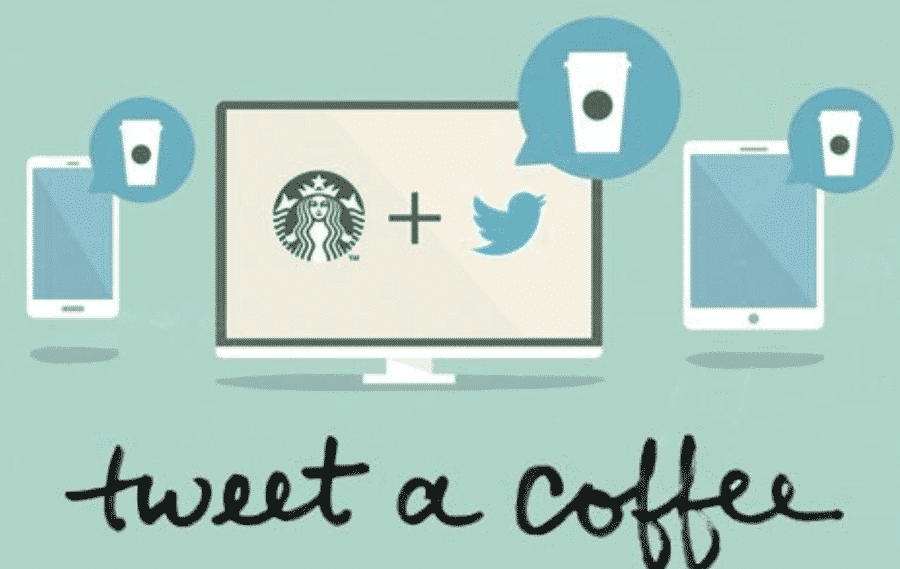
7. 27% Of Small Businesses Do Not Have A Website. Capitalize On This Opportunity Whether Your Are Selling Online Or Not.
Food and beverage brands stand to gain a lot from eCommerce:
- 27% of small businesses still do not have a website.
- Users have cited 24/7 availability as their number one reason for shopping online.
- There are roughly 150 million online food and beverage shoppers in the U.S., almost half of the country’s population.
Whether you are looking to sell online or not, digital presence can be a powerful tool to expand your market and support almost every stage of your sales funnel.
A simple website can help your food and beverage brand:
- Strengthen brand identity
- Educate your audience about your products
- Gain customer loyalty through user-generated content
- Run promotional campaigns to increase store traffic
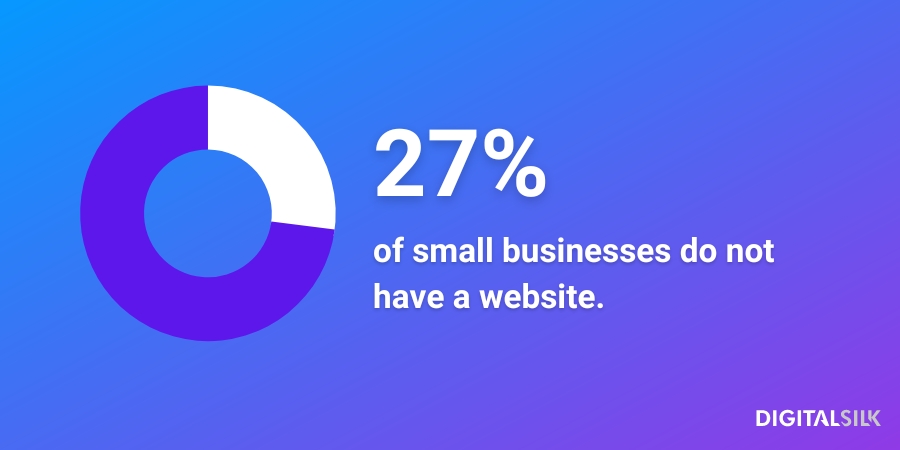
8. 87% Of Consumers Perform Their Product Searches Online. Optimize Your Content For Search Engines.
Optimize your website for search engines by including a title tag, meta descriptions, alt tags and image names.
Use specific keywords related to search terms your food and beverage customers might use. Include the keywords in your landing pages, blogs, marketing campaigns and hashtags.
General recommendations for SEO when it comes to your food and beverage business include:
- Use keyword research tools such as SEMrush to select the keywords that correspond to your business niche
- Create quality content based on the selected keywords
- Include keywords focused on health and environmentally sustainable products
- Focus on recyclable and sustainable packaging keywords to demonstrate a commitment to the environment
- Highlight any health benefits your products may have for the consumer
SEO content will help you:
- Increase your online visibility
- Target quality traffic
- Meet consumers’ demands
- Boost conversions
9. As Little As $1 Invested In Email Marketing Can Generate Up To $45. Nurture Prospects & Grow Loyalty Via Email.
Email marketing campaigns can be a real game-changer for your F&B business:
- Every U.S. dollar invested in email marketing results in an average ROI of $45.
- Email marketing revenue is predicted to reach $17.9 billion by 2027.
Use email campaigns to attract customers to your website or social media platforms. Keep your audiences informed about your latest news, events, promotions and discounts.
To create a successful email campaign:
- Create copy centered on your consumers’ pain points
- Use high-quality images reflecting the taste and benefits of your products
- Use enticing and specific CTAs to generate traffic to your food and beverage pages and boost conversion
- Use personalization to engage consumers
Email marketing will help you:
- Optimize engagement by serving highly targeted content
- Nurture your audiences to conversion
- Increase loyalty and repeat sales
10. Over 1.5 Billion Consumers Worldwide Engage With Augmented Reality. Elevate User Experience With New, Immersive Tech.
Augmented reality (AR) can bring a revolutionary change in the way your consumers perceive your brand and products.
- The number of AR users worldwide in 2024 is 1.73 billion.
- One-third of U.S. shoppers will use AR technologies to buy products online by 2025.
From scanning a wine bottle label to learn about the origins of grapes to allowing consumers to visualize a piece of furniture in their home, AR offers an innovative and interactive user experience.
Incorporate AR technology to boost interest, create engagement and increase conversion. Inspire your customers to explore, see, try and learn about your offerings.
AR can help you:
- Provide a unique and immersive user and brand experience
- Engage existing and prospective consumers with innovative solutions
- Enhance product and/or brand education
11. U.S. Companies Spent $56 Billion On Social Media Paid Advertising Last Year. Reach New, Highly Targeted Audiences With Paid Social.
Launch pay-per-click (PPC) campaigns to bring highly targeted and, therefore, relevant audiences to your website. As a result, you will see your conversion rates go up.
- U.S. adults viewed 3.98K food and beverage ads in 2016.
- Adults in the U.S. viewed 2.83K restaurant ads in 2015.
- Grocery stores advertising spending in the U.S. amounts to $190 billion annually.
- Frozen, canned, vegetable and specialty foods and preserved fruit advertising spending amounted to $1.36 billion in 2016.
While these insights may seem outdated, consider that the U.S. social media ad spend grew from $15.63 billion in 2016 to $66 billion in 2022 and then guess where those numbers stand today.
PPC campaigns will help you:
- Grow brand awareness among new, highly qualified audiences
- Generate leads while controlling your marketing budget
- Increase social media following and engagement and, in doing so, increase the future impact of your organic campaigns
12. Online Tastings & Events Are Here To Stay. Connect & Reconnect With Your Audiences Via Virtual Events.
The challenges of social distancing during the COVID-19 pandemic along with the rise of technology turned online virtual events into an absolute hit that has stuck.
One survey found that:
- 88.1% of respondents had hosted at least one virtual event in the past year.
- 57.4% of event professionals believe that “hybrid events are the future.”
- 93.2% of people surveyed stated that their virtual event was successful when considering attendance rates.
From social media platforms like Facebook and Instagram to specialized event platforms, organize your remote dinner party, Happy Hour or virtual wine tasting to attract new target groups and create entertainment.
Hosting such an event for your food and beverage business can help you:
- Create cost-effective events
- Engage audiences from different geographic locations
- Provide interactive product education
- Generate leads
How To Choose & Prioritize Marketing Channels For Your F&B Brand
Choosing the right marketing channels for your F&B brand will boil down to:
- Your historic data: If you have tested various campaigns, spend some time auditing the efforts and deriving insights based on performance.
- Your target audience: Where do they spend time? What platforms do they engage with the most?
- Competitor and industry benchmark: Where are your competitors present? How active are they? What is working for them and what is not?
- Your budget: What can you invest in to move the needle? Instead of spreading yourself thin, we always recommend starting with one or two channels at most, so you can invest enough to generate valid and valuable insights.
Why Should F&B Companies Invest In Digital Marketing?
By now, you should have a pretty comprehensive overview of the many challenges digital marketing channels solve for F&B companies, as well as the opportunities they bring. (If you don’t, do let us know – we welcome feedback!)
So let’s recap them in easy-to-follow and -share benefits.
The benefits of food and beverage marketing include:
- Brand visibility and recognition
- Online conversions and offline sales
- Upsells and increasing customer lifetime value
- Brand loyalty
- Brand advocacy
Food & Beverage Marketing Takeaways
The top digital marketing strategies for gaining more customers in the food and beverage industry in 2024 include:
- Social media
- Blogging
- Reputation management
- Google My Business
- Customer advocacy
- Email marketing
- Augmented Reality
- Hosting online virtual events
At Digital Silk, we offer results-driven marketing services. To create a food and beverage marketing strategy, we perform thorough research of your food and beverage competitors, industry and target audiences.
From creating personalized email campaigns to devising a custom social media presence and writing expert blog posts to encourage education, our experts use research-backed insights for marketing that brings results.
Contact our team or fill in the request a quote form below to kickstart your F&B digital marketing journey today!
"*" indicates required fields


